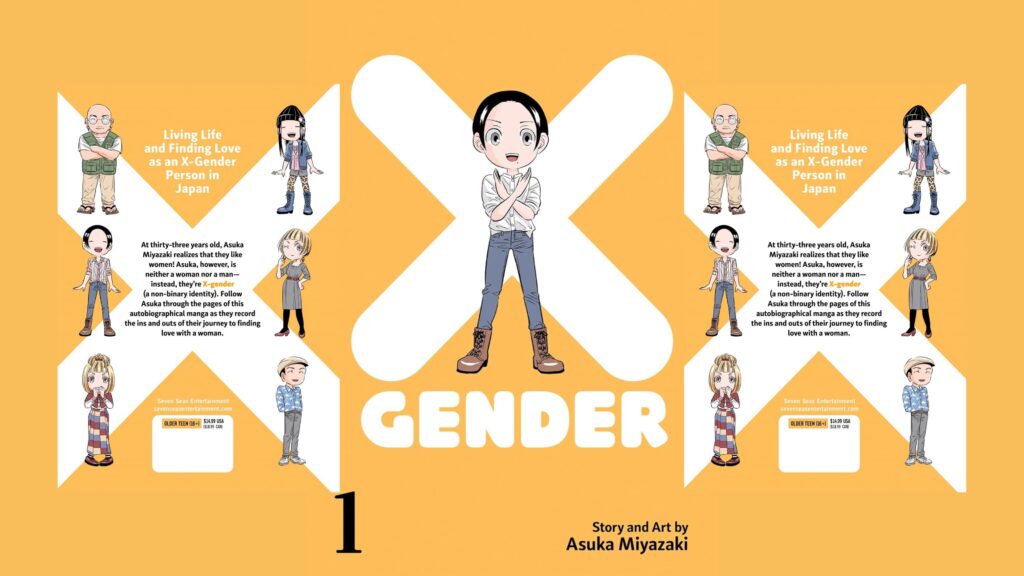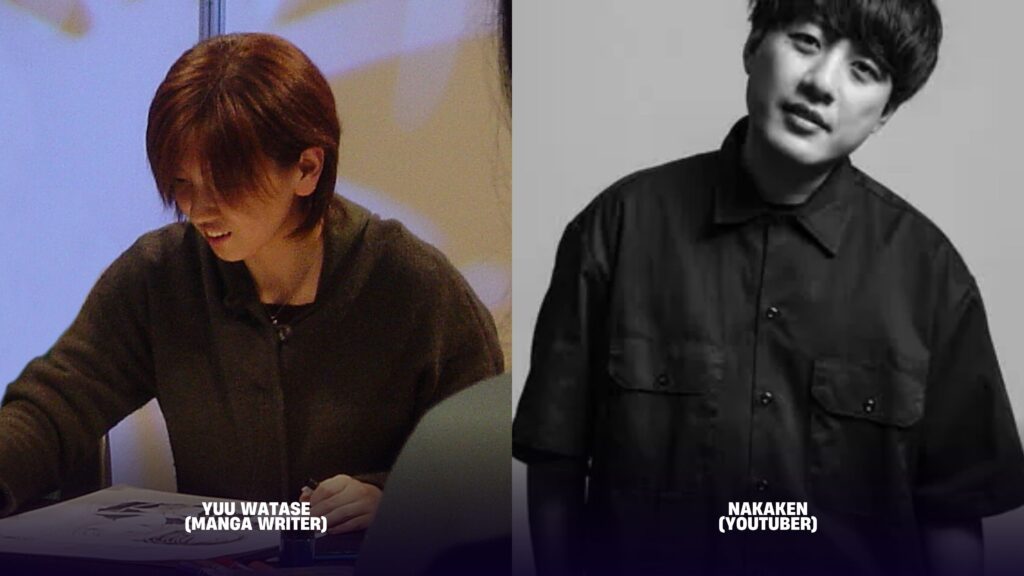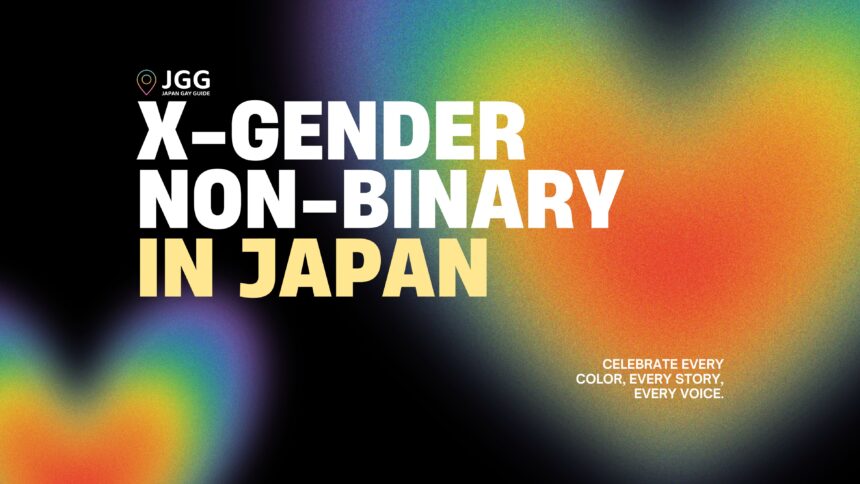Many people today have come to understand what it is to be a MtF or an FtM transgender person, even if the laws and level of acceptance in Japan are not what we would want them to be. However, one set of people, whose identities are closely tied to the transgender community whose experience are less well-known is the non-binary community.
So, what does it mean to be non-binary? What does the term “X-gender” mean? Are they different?
What Does “Non-Binary/X-Gender” mean?

While “non-binary” is the generally accepted term across most of the (English speaking) world, and it is becoming more and more recognized in Japan, those that we would typically called “non-binary” elsewhere are often called “X-gender” in Japan.
Because Japanese doesn’t often use pronouns in everyday speech, being neither a gendered language, nor typically using the equivalents of “he” or “her” as in English or some other languages, it lends itself more easily for X-gender linguistic expression than some other languages.
As with non-binary, X-gender is a term that expresses a spectrum of identities that do not adhere to the rigid gender-binary of man and woman. This can include a significant number of identities, so let’s go through some of the major ones.
Different Types of X-Gender Identities in Japan

While many X-gender people may not fit neatly into the following categories, these are the main four that people are usually referring. If someone tells you that they are non-binary, or X-gender, then more often than not, they are referring to one of the following definitions.
Ryōsei (両性)
Literally meaning “both genders,” this is perhaps the most commonly understood form of being “non-binary,” in that someone who identifies in this way considers themselves not to be either a man or a woman, but instead identify with both at once, In English, the most accurate definition might be rendered, “bigender.”
Chūsei (中性)
Meaning “between genders,” chūsei is for those who also do not identify clearly with being either a man or a woman, but rather as a “third gender,” literally a gender between the two. This identity also includes people who are intersex.
Musei (無性)
Musei, in English, is best rendered as “agender.” This identity is for people who — no matter how they may present themselves — do not identify with being either a man, or a woman, or any other form of gender.
Futei-sei (不定性)
Translated in a literal sense as “unfixed gender,” the English equivalent is “gender fluid,” which is to say that they can experience and identify as a man, woman, or any other gender at different times or under different circumstances.
A Brief History of X-Gender in Japan
Though the exact origins are obscure, the term emerged in the Kansai region in the late twentieth century, and began to become more broadly recognized in the 1990s, when it began appearing in LGBTQ+ magazines, and soon became part of the public’s attention. Today, thanks to social media and a few high-profile X-gender people in Japan (which we’ll touch on below) it is more well-known across the country.
Recognition and Legal Status
However, understanding among those familiar with social media has never been a guarantee of recognition at a systemic level, and the same is largely true for X-gender people in Japan.
While many countries — including Australia, Canada, and Germany — allow for identification to have a “X” to denote one’s gender, as well as “M” or “F,” this is not yet the case in Japan on a national scale.
However, there are some strides being made at the local level. For example, in Shizuoka, the municipal government removed gender markers from 30% of the official documentation it offers. Further, Yokosuka city in Kanagawa recognizes “X” as a gender for the purposes of partnerships if applying for a partnership oath certificate.
Cultural Expression and Representation of X-Gender
There are a few high-profile examples of people who are X-gender in Japan, as well as characters in popular media. Here are just a few:
In Media

Najimi Osana, of Komi Can’t Communicate, has been considered to be a non-binary or X-gender character. Born as a boy, they have feminine features and are taken to wear feminine clothing. Their status is remarked on by their classmates in the show, though it is implied that they do not always understand it (even if they are supportive).
Testament, from the fighting game series Guilty Gear, is considered musei X-gender, identifying neither as a man or as a woman.
In the manga Blue Period, Yuka is a non-binary character, whose gender expression is primarily feminine, though they will wear more masculine outfits on occasion, as well. Identifying primarily as a non-conformist, they have been highly praised for their deep storyline regarding their identity and familial pressures.
Public Figures

Yuu Watase is a manga writer and artist who identifies as X-gender, although she still uses she/her pronouns in English. She is best known as the creator of such acclaimed manga as Absolute Boyfriend and Fushigi Yuugi.
Nakaken is a YouTuber and LGBTQ+ activist, who identifies both as X-gender and asexual. They aim to promote LGBTQ+ issues in Japan, both online through their YouTube channel, and in real life campaigning.
Morita Shinichi was a founding member of G-Front, an LGBTQ+ rights activist group. They identified as “MtFtX,” considering themselves to be gender free, saying, “there exists no word for transsexual or transgendered individuals who do not clearly aim to be distinctly male or female. As such, I just use the term ‘x-jendā’ to talk about my way of being.”
Online X-Gender Personalities
For many X-gender people, the internet can be a place where they can easily and safely express themselves. While those unfamiliar with what it means to be non-binary — including authorities, friends, and even family — may not always understand what X-gender people mean when they describe their experiences, online communities of X-gender people mean that one can find one’s tribe, and express yourself online.
Such expression can take many forms, including modes of dress, make-up, art, or music. One such example, living here in Japan, is Bitsy Tandem, who is a non-binary A-gender-X identifying person. Using it/she/zem pronouns, Tandem is a Japan-based VTuber, author, and creative who both develops her own worlds in her fiction, but also helps others — no matter who they are — tell incredible stories. Find out more about her production studio and more here.
X-gender FAQs
Q. What pronouns should I use for X-gender people?
A. Just ask them! In English, many will prefer “they/them,” but this is not always the case. The best thing to do is ask.
Q. I accidentally misgendered my X-gender friend! Are they going to be angry with me?
A. Usually, if you make a slip-up like this, X-gender people are very understanding and forgiving. It is only if it is clear that they are being misgendered purposefully that offense is taken.
Q. Do I have to be Japanese to use the term “X-gender”?
A. Not necessarily, but you can. That being said, the term “non-binary” is more and more accepted these days, so if that’s what you’re most comfortable with, you can stick with that.
Q. How can a change to X-gender be expressed?
A. In the same way that male to female transgender people can express themselves as being “MtF,” so can AMAB X-gender people express themselves as “MtX,” while AFAB X-gender people would use “FtX.”
Non-binary and X-gender issues in Japan have been slowly gaining notice for decades. With the rise of people identifying as non-binary or X-gender, as well as a growing presence on social media, we will hopefully see progress of the sort we saw in Yokosuka and Shizuoka across the country soon.

